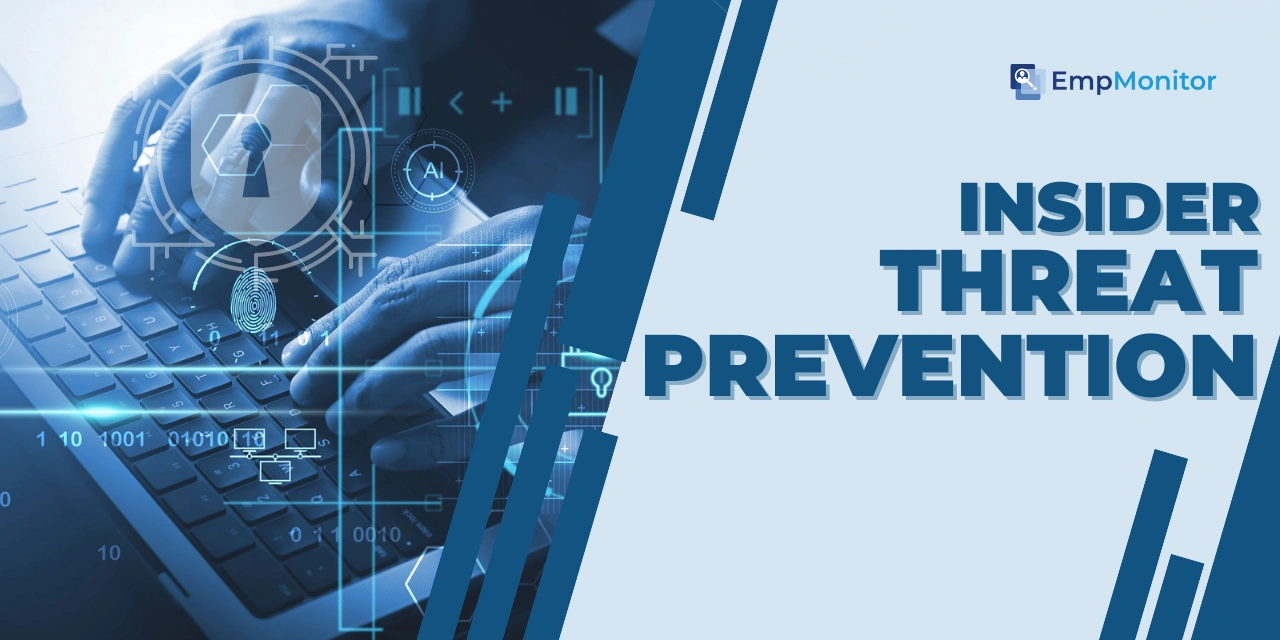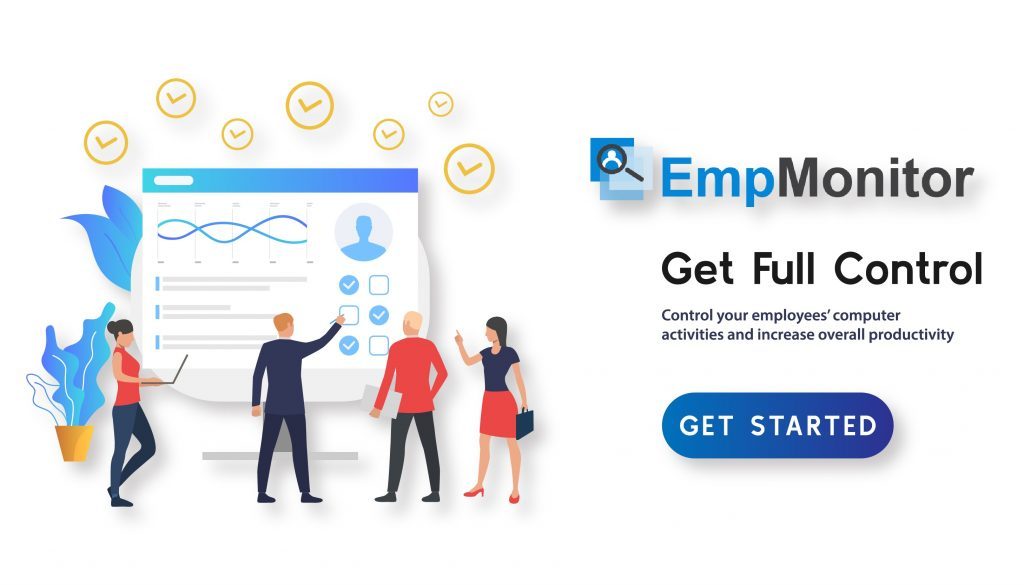Insider threat management is an essential part of contemporary cybersecurity strategies. Implementing measures to identify, prevent, and address insider attacks is crucial for safeguarding sensitive data within any organization.
Furthermore, compliance with various IT regulations, standards, and laws such as NISPOM, NIST SP 800-53, HIPAA, and PCI DSS, among others, mandates establishing an effective insider threat program.
We will understand the vital requisites for an insider threat program and provide valuable insights on how you can construct a comprehensive insider risk management program in this blog.
Before diving into the techniques of crafting an insider threat management program, let us first get an in-depth understanding of what it is.
In a hurry? Listen to the blog instead!
Insider Threats Program: What Is It?
An insider threat program refers to a set of measures and protocols designed to address and manage the potential risks posed by individuals within an organization who enjoy access to sensitive information and resources.
This program aims to identify, stop, and handle hostile activities and inadvertent security breaches committed by insiders, such as contractors, employees, or others.
Insider threat management programs have specific objectives, including identification of insider threats, prompt response to such types of threats, mitigation of their consequences, and enhancement of overall awareness regarding insider threats.
Before delving into the specifics, it’s crucial to understand the rationale behind investing time and resources in these programs.
Using software specifically designed for insider threat detection and management can be extremely helpful in implementing an effective insider threat program. Such software often utilizes advanced algorithms and analytics to monitor user behavior, identify anomalies, and flag potential insider threats in real time.
So, let us learn the benefits of employing this software.
Advantages Of Using Insider Threat Prevention Software:
While external attackers are considered the primary instigators of cybersecurity breaches, the insider threat poses a more formidable and challenging risk for several reasons:
- Insiders can conceal malicious behavior by knowing intimately about the organization’s networks, procedures, and security protocols.
- Their familiarity with valuable data and its specific locations facilitates the initiation of a data breach easily.
- Moreover, insiders enjoy legitimate access, complicating the distinction between routine and malicious activities.
The increasing cost and complexity associated with detecting insider threats make it essential for organizations to establish a robust insider threat management program.
Benefits Of Using Software:
There are many benefits of using threat management software. Some of them are mentioned below:
Early Identification Of Insider Threats:
Implementation of an insider threat program enables the timely recognition of indicators of insider threats, preventing potential harm to the organization.
Adherence To Standards, Laws & Regulations:
By employing an insider threat program, organizations can successfully navigate compliance audits and demonstrate their commitment to meeting requirements such as SOX, HIPAA, PCI DSS, and other IT compliance standards.
Swift And Effective Response To Insider Attacks:
A comprehensive insider threat management program delineates the necessary procedures, tools, and personnel for mitigating threats. An action plan specifies what employees must do during cybersecurity incidents.
Cost Reduction In The Aftermath Of An Insider Attack:
Implementing an insider threat program enhances the ability to thwart an attack quickly, thereby immensely minimizing the potential damage caused by an insider.
One of the best tools to employ for insider threat prevention is EmpMonitor. It is an employee monitoring software that can detect insider threats by monitoring employees’ actions in remote and physical workplaces and help in preventing insider threats effectively.
So, let us know about this remarkable software.
EmpMonitor- The Best Employee Activity Tracking Software
EmpMonitor serves as an employee monitoring solution, capable of identifying insider threats by overseeing user actions in remote and physical work environments.
This software enhances organizational security, boosts employee productivity, and improves overall efficiency. Additionally, EmpMonitor can retrieve browsing history, even if employees attempt to delete it.
The software features a Stealth mode monitoring option, contributing to protection against insider threats. It is affordable, and with its comprehensive features, many users praise it for providing robust monitoring capabilities at a reasonable price.
How EmpMonitor Helps In The Prevention Of Insider Threats:
There can be many types of threats from the workforce. But the most prominent are two types of threats. So, what are two types of insider threats?
The two types of internal threats are:
- Intentional
- Unintentional.
The software can easily detect these threats that come from the employed workforce.
Examples of these threats that it can help prevent are:
- Making an error in typing an email address and inadvertently sending a confidential document to a competitor.
- Clicking on a link or opening an attachment in a phishing email.
- Inappropriately discarding documents containing sensitive information.
- Using an unauthorized USB or other such equipment without permission.
Some other beneficial features of EmpMonitor are:
- Time tracking
- Employee activity report generation
- Keystroke recordings
- Chat Monitoring
- Screenshots
- Project Management
- Workforce Productivity & Engagement Tracking
- Attendance Monitoring
- Timesheets
Thus, it is a fantastic tool for insider threat management due to its sturdy staff monitoring features. You can depend on it for all your employee security-related issues. It is the best employee monitoring software.
Now that we have learned about the benefits of using this software- let us return to our topic.
10 Steps To Build An Effective Insider Threat Prevention Plan
Developing a robust strategy to mitigate insider threats is crucial for organizational security and resilience. Following are the ten steps you can use to create an effective insider threat prevention and management plan.
Make Provision To Assemble The Program:
Prepare to establish a threat prevention program successfully by recognizing the significance of preparation.
This crucial phase entails gathering detailed information on stakeholders, compliance requirements, and cybersecurity protocols and defining the program’s goals to save time and effort.
Conduct A Risk Assessment:
Establishing the foundation of an insider threat management program involves specifying the sensitive assets, which may encompass both physical and virtual elements such as client and employee data, technology secrets, intellectual property, prototypes, etc.
Identifying these assets and potential threats is best achieved by conducting an external or insider threat risk assessment. This process facilitates a comprehensive evaluation of your cybersecurity posture.
Determine The Resources Required For Program Development:
Creating an effective insider threat program extends beyond the cybersecurity department. Getting the backing of different organizational departments, using specialized insider threat management software, and setting aside money for cybersecurity tools and expert hiring are all necessary for success.
Evaluate existing technologies for insider threat monitoring before making investments and compile a detailed list of required resources for accurate financial and personnel estimates.
Secure Backing From Senior Leadership:
Utilize the data collected in the preliminary stages to garner support from key stakeholders, including the CEO, CFO, CISO, and CHRO, for program implementation.
Their endorsement is vital for resource allocation and fostering a culture that stresses insider risk. Present compelling case studies showcasing the necessity and advantages of an insider threat management program.
Citing examples of data breaches and their consequences and demonstrating how the program fits in with the business goals of C-level officers will help win their approval.
Establish A Team For Responding To Insider Threats:
An insider threat response team comprises employees accountable for overseeing all aspects of insider threat management, from detection to resolution. Contrary to common perception, this team should not exclusively consist of IT specialists.
It should be interdisciplinary and endowed with the power and tools for prompt and decisive action. When establishing your insider threat response team, ensure clarity on its mission, the specific responsibilities of each team member, and the policies, procedures, and software required to counter insider threats.
Identify Measures For Insider Threat Prevention:
Effective identification of insider threats requires dedicated insider threat management software, facilitating swift responses and minimizing remediation costs.
Use software such as EmpMonitor, which can track user activities, control access to private resources, analyze user behavior using artificial intelligence, and provide thorough reports for proactive research and detailed surveillance of IT infrastructure.
Also Read:
Insider Threat Detection: How to Identify and Prevent Internal Risks
How To Protect Your Data From Insider Threats?
Insider Threat: What Is It And How To Protect Your Company From It
Develop Strategies For Responding To Incidents:
To promptly address identified threats, your response team must address typical scenarios of insider attacks. The insider threat management response plan should be practical and easily executable.
Rather than attempting to address every conceivable scenario with individual plans, develop several fundamental plans encompassing the most likely incidents.
Each response plan should entail the following:
- Threat description
- Indicators of threats, both technical and non-technical
- Perpetrators of threats
- Actions taken to mitigate threats
- Documentation of evidence
An efficient incident response plan aids in:
- Preparing for emergencies
- Coordinating cybersecurity actions during incidents
- Resolving issues promptly
- Minimizing damage resulting from incidents
Develop A Strategy For Investigating And Remedying Incidents:
Create a procedure for looking at cybersecurity events and possible remedial actions to protect your data from insider threats effectively. Investigations typically involve gathering incident data, evaluating its impact, preserving forensics evidence, and notifying higher-ups and regulators.
Following the investigation, a comprehensive understanding of the incident’s scope and potential consequences allows for the progression of a detailed remediation plan.
This plan should encompass communication strategies, necessary cybersecurity modifications, and enhancements to the insider threat management program.
Provide Proper Training To Your Employees:
Tailor training content to address the specific security risks, tools, and methodologies relevant to your organization.
There should be a prompt response to insider threat indicators, explanations of the program’s existence, and examples of actual incidents.
Evaluate the training’s effectiveness through interviews, tests, or simulated insider attacks to gauge employee comprehension and identify areas for improvement in subsequent sessions.
Regularly Assess And Review Your Program:
Because insider threats are constantly changing and becoming more complex, creating an insider threat management program is a continuous process.
Regular reviews and updates are essential at specified intervals, following insider threat incidents, with the emergence of new compliance requirements, and in response to changes within the insider threat response team.
Conclusion:
Creating a robust insider threat management plan requires a blend of technical measures, policies, employee education, and a proactive security approach. Regularly testing and simulating scenarios can validate the plan’s effectiveness and pinpoint areas for enhancement.
Consider incorporating the ten steps outlined in this guide to establish a comprehensive insider threat prevention and detection program. Consider taking assistance from computer monitoring software like EmpMonitor, for effective implementation.
This tool enables the prevention of insider threat incidents, detection of potential indicators, and swift intervention in suspicious activities. Its seamless integration with existing IT infrastructure enhances overall security against risks associated with human factors.



















